What were venues staging Navroze naataks in Bombay like in Parsi theatre's glory years?
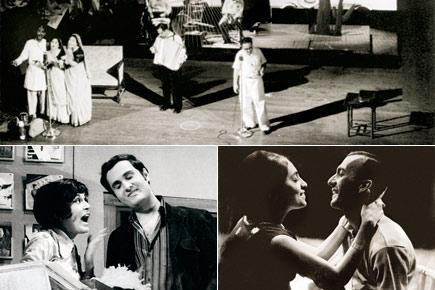
Ruby and Burjor Patel
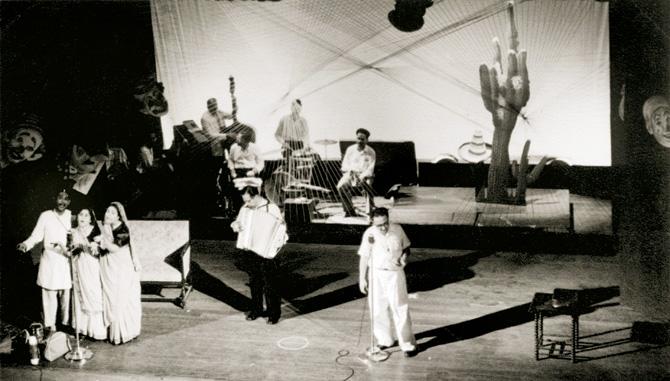
The technical rehearsal of Hasa Has at Bharatiya Vidya Bhavan. After the 1960 bifurcation of Bombay and Gujarat, writer-director Adi Marzban (seen at the mike) presented this revue to say Go east, go west, Bombay is best. Far left in the frame is the trio of singing stars Jimmy Pocha, Ruby Patel and Piloo Wadia. Popular accordionist Goody Seervai is also seen playing. PHOTO COURTESY MEHER MARFATIA/LAUGHTER IN THE HOUSE
ADVERTISEMENT
 "Nothing in the world was more joyful than Parsi plays 50 years ago," MF Husain told me. On a dull afternoon in monsoon-mulched Mumbai, there was no missing the mirth lacing his voice. It wafted warmly over a phone line from London, where our foremost artist in exile sat, 10 years ago, with gallery owner Dadiba Pundole. Growing up on Grant Road, Husain knew well the comic stage tradition of the community he was close friends and neighbours with. "We had great times in those play halls," he said.
"Nothing in the world was more joyful than Parsi plays 50 years ago," MF Husain told me. On a dull afternoon in monsoon-mulched Mumbai, there was no missing the mirth lacing his voice. It wafted warmly over a phone line from London, where our foremost artist in exile sat, 10 years ago, with gallery owner Dadiba Pundole. Growing up on Grant Road, Husain knew well the comic stage tradition of the community he was close friends and neighbours with. "We had great times in those play halls," he said.
Without a doubt those were golden years for a theatre genre at once unique and universal. Few can forget the sparkle of Parsi plays which touched thousands of theatre-goers thronging 20th-century city halls. They were productions attracting the widest spectrum of viewers bound by the Parsis' mother tongue - Gujaratis, Bohris and Khojas applauded these adroitly adapted Broadway or West End originals.
Giggles and guffaws guaranteed, there was always uproarious laughter in the house. But the business of comedy was serious. Play titles were announced every Jamshedi Navroze in March and again at Parsi New Year and Khordad Sal in August. Yet, the maroon velvet curtain stayed up on fresh productions for much longer. Word of mouth reviews flew fast, generating year-round excitement. Wads of tickets crisply tore off, House Full boards loomed large, repeat audiences thronged to the same play. Even transport lines buzzed busier to fit the fun. Tram routes past Bharatiya Vidya Bhavan were jammed at Chowpatty certain evenings. Ardent fans of variety revues like Has a Has boarded them, eager to catch jaunty numbers they lustily sang along with their adored actors.
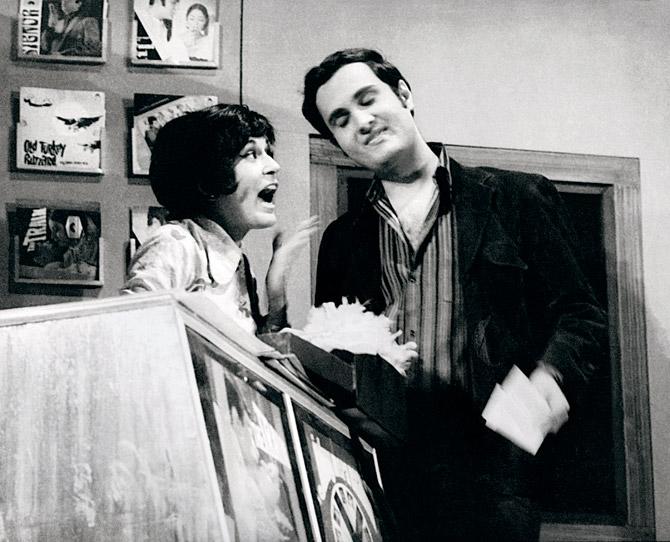
Aban Patel and Cyrus Bharucha in Ugee Dahapan Ni Dor, 1972. The challengingly small Jai Hind College stage had 'slider' sets expertly designed by INT's Gautam Joshi to create four scenes: dental surgery, next-door home, record shop and disco, which jack-knifed alternately. PHOTO COURTESY MEHER MARFATIA/LAUGHTER IN THE HOUSE
"Though it seldom happened, we were completely lost without a weekend play to perform," recalls veteran actor-producer Burjor Patel. With his wife Ruby he was part of the powerhouse ensemble cast of Piroja Bhavan in 1954. Presented by Bharatiya Vidya Bhavan, the game-changer production vaulted the Parsi play from a standard five or six, to 30 shows. With dramatic revolving sets perched at multiple levels and technically polished rain scenes with fog machine effects, this was Adi Marzban's artful spin on Kaufman and Hart's history-mocker, George Washington Slept Here.
Involving bizarre logistics, it actually coaxed a menagerie of horses, cattle and goats to trot onto the floorboards. "Arre, aajeh toh aapri bakri ne taap chhe," was the concern on a night an animal with mild fever was caringly kept back to rest!
Who ensured the stars were comfortable and audiences happy enough to not demand ticket refunds? It was the theatre managers. These men ruled, wooed by producers and directors alike clamouring for dates of their choice. "They were competitive yet collaborative," says 83-year-old Goolu Lala, whose husband Cooversha managed Tejpal Auditorium for 35 years from its inception in September 1960. While Bharatiya Vidya Bhavan at Chowpatty showcased Indian National Theatre (INT) plays, other producers and directors vied for four halls: Tejpal at Gowalia Tank, Birla at New Marine Lines, Patkar at Churchgate and Bhulabhai Desai Auditorium at Back Bay. But Cooversha Lala of Tejpal, Burjor (Dicky) Pavri of Birla, Sam Kerawalla of Patkar and Jimmy Pocha of Bhulabhai Desai and later Sophia Bhabha hall, remained a friendly foursome.
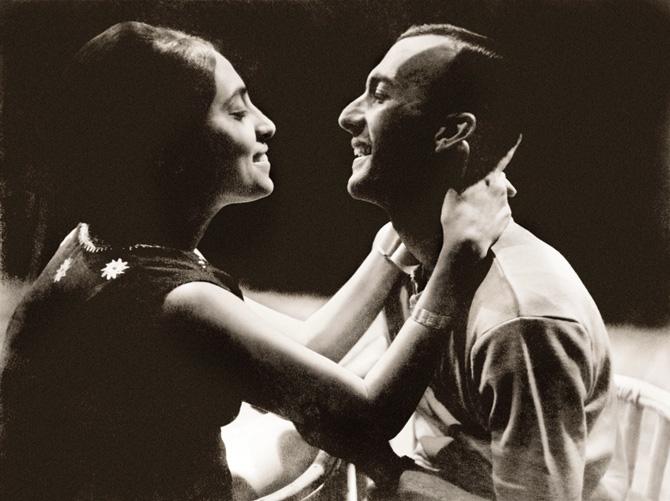
Dolly and Bomi Dotiwala in Sagan ke Vagan, 1966, their first major hit together. Its 104 successful shows at Tejpal and Bhavan were even celebrated with a jashan ceremony
Goolu Lala attributes Tejpal's popularity to cheap rent, good lights, quality mikes "and garma garam batata wadas they were the first to sell in the interval". Hot snacks served under Gujarati management were strictly vegetarian of course. Parsis titched the hitch carrying their own packed pora-pao, omelette sandwiches.
"Birla hosted our Sunday night adda," reminisces actress Moti Antia. Her writer-director-actor husband Pheroze Antia etched a signature character: the bumbling henpecked hero Behram. Along with playwrights and producers, the quartet of managers met in a room near Dicky Pavri's office, down a passage from the auditorium.
"We'd have nice rounds of theatre gossip and discussion over dinner with drinks, or takoras, as we call them!" Antia declares. "Sometimes I took curry rice there or khariyas (paya) with brun bread." Interestingly, Pavri was both a pagri-wearing priest and Birla manager. And the 1100-seater theatre he looked after was initially a lecture hall for doctors.
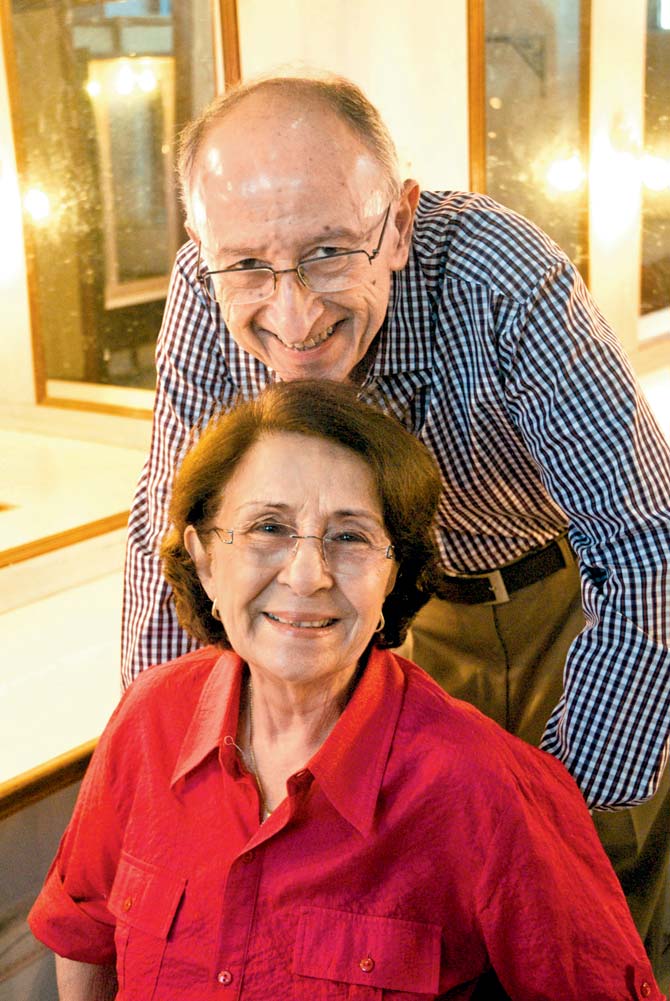
Ruby and Burjor Patel revisit the green room of Tejpal Hall in 2010. PHOTO BY SOONI TARAPOREVALA
Explaining what it was like to manage another theatre formed "by default", Sam Kerawalla says his was originally the badminton court for young collegians of Sir Sitaram and Lady Shantabai Patkar's SNDT Women's University. Passersby gawking at the girls' games necessitated closing off the space from public view, with walls and a then two and a half foot-high stage. Leaving a lucrative job at Premier Auto Electric to immerse himself in "my religion - theatre", Kerawalla presided over Patkar for 36 years at half his earlier salary. He was acknowledged technical big daddy to theatre troupes. With nine doors welcoming people to its 700 seats, the hall boasted Kabuki theatre-inspired apron stage extensions.
"Between them, producers and managers orchestrated a vibrant theatre movement," Kerawalla says. "Everyone wanted to cut the cake, eat the cake and digest the cake." Actor-producer Shernaz Patel credits Kerawalla for making the stage her home. "I was a stiff kid. Sam called me to Patkar after school, taught me to walk and talk. He introduced me to the smell of a theatre, the exciting sense of an auditorium."
As for the actors' preference, Ruby and Burjor Patel's vote goes to Tejpal for Gujarati and Sophia for English plays, for comfortable sized green rooms, excellent acoustics and good box office response. "All work on Adi's plays during our 12 years with him was at Bharatiya Vidya Bhavan," Burjor says. "The Jai Hind College hall was INT's basic theatre. As they had a Gujarati theatre wing and a Parsi theatre wing, we moved by turns to Tejpal, Patkar, Birla and Bhaidas in Vile Parle."
The Patels remember an incident at the 1972 grand rehearsal of Ugee Dahapan Ni Dor (the blithe Gujarati answer to Cactus Flower). As news broke of the Ajit Wadekar-captained Indian team winning the cricket match against Pakistan, exultant director Pravin Joshi urged his cast to forget work and just celebrate. In days of rigour and perfectionism, without that crucial rehearsal too the play catapulted to cult status. Building its 'slider' sets on the city's smallest stage - Jai Hind College - was challenging. INT designer Gautam Joshi expertly created four scenes (dental surgery, next-door home, record shop, disco) jack-knifing alternately before an audience enthralled to see strobes sweep across the ceiling for the very first time.
Singing star Bomi Dotiwala and his wife Dolly also found the Tejpal green rooms the best: capacious, well equipped with lighting facilities and large mirrors. "Bhavan's was the more conveniently located green room, with the shortest distance for actors to cover on getting off stage," Bomi says. In his experience the first two shows of any play were watched mainly by Parsis. Those that followed were patronised by a wonderful mix of Bohris and Gujaratis. They laughed and cried when the Dotiwalas memorably enacted bittersweet moments in Marzban's hit Sagan ke Vagan at Bhavan and Tejpal. Tickets for it sold snap within an hour of booking window shutters raised and a jashan was organised to mark 104 shows it so easily notched up.
The backstage dynamic is a beautiful mix of learning and playing. Few exemplify this better than Dotiwala, among the lead actors of Laughter in the House 2, currently enjoying its sequel run. A month after an accident claimed vivacious actress Villoo Panthaky Kapadia, Parsi theatre lost another beloved veteran. Putting in a spirited song and dance performance at the Laughter dress rehearsal last month, 80-year-old Dolly Dotiwala passed away, sipping the next morning cup of tea with her husband.
Setting aside wrenching personal loss, Bomi continued with a crackerjack opening night performance only an hour after her uthamna prayers. That was bound to have his soulmate smile down her approval throughout the brave show. Ensuring there was no trace of grief in the green room either, the actor exuded dignity in distress. His audience couldn't share such composure. There was barely a dry eye in Tata Theatre as he most movingly underscored that time-honoured stage ethic: tinged by tragedy or not, the show must go on.
Author-publisher Meher Marfatia writes fortnightly on everything that makes her love Mumbai and adore Bombay. You can reach her at mehermarfatia@gmail.com
 Subscribe today by clicking the link and stay updated with the latest news!" Click here!
Subscribe today by clicking the link and stay updated with the latest news!" Click here!






